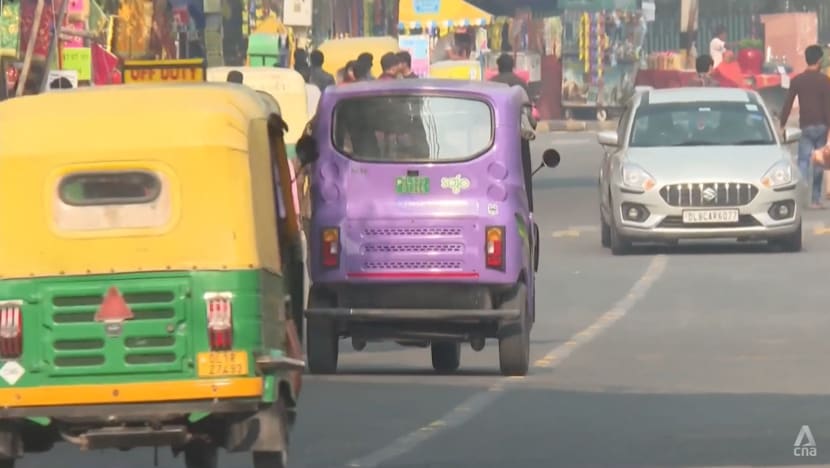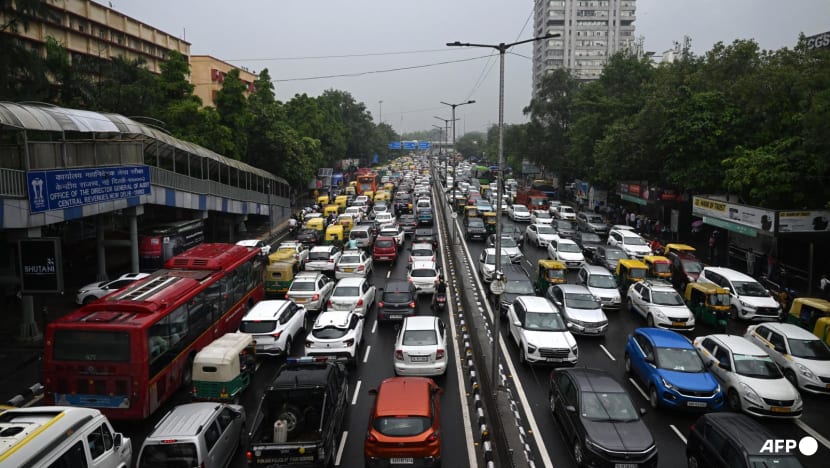India’s capital Delhi faces infrastructure, cost issues in transport sector’s green transition
The Delhi government has put in place a policy to promote the use of electric vehicles (EVs), including using it for public transport.

Observers said further challenges stand in the way as India pursues its electric vehicle targets.

This audio is generated by an AI tool.
NEW DELHI: Pollution has long been a major headache for residents in the Indian capital of New Delhi.
The situation has only worsened after India last year became the third largest automobile market globally, behind only China and the United States.
While the country holds great market potential for automakers, the development is not good news for its capital where traffic pollution is already a problem.
To address this, the city’s government has put in place a policy to promote the use of electric vehicles (EVs), including using it for public transport.
But there are further challenges in the way as India pursues its electric dreams, said observers.
ELECTRIC SOLUTION TO POLLUTION
New Delhi is one of the most polluted cities in the world, and among the government’s plans to tackle the issue is pushing for a switch towards EVs.
In a city known for traffic chaos and traffic pollution, the emblematic rickshaws have been the most successful in driving green change on the roads.
The group has the highest EV adoption rate, though rickshaws constitute only 16 per cent of all of Delhi’s vehicles.
Currently, almost one in every 50 rickshaws plying the streets of the Indian capital is powered by electrical energy.
Ms Sunita Choudhary, who was the first female auto-rickshaw driver in Delhi when she started out 19 years ago, has seen the transition of the vehicles, from those running on traditional fuel, then to compressed natural gas (CNG) and now on electric batteries.
While she is happy that her vehicle is emission-free, she said the facilities set up by the government for recharging or exchanging the rickshaw batteries are not adequate.

"If we get green batteries (from battery exchange points), then the rickshaw can run longer. If we get orange coloured batteries, those run for a lesser duration,” Ms Choudhary told CNA.
“Green batteries run for 80km. If we don’t get green batteries then we have to change batteries three times a day. Sometimes there are very long lines in these stations too."
GREENING THE PUBLIC TRANSPORT SECTOR
The Delhi government has ambitious EV plans, aiming to have one out of every four vehicles sold in the Indian capital to be an EV by this year.
A big part of the policy is in accelerating the green transition in mass public transportation.
Currently, 800 of the 3,700 buses run by the Delhi Transport Corporation are electric, making Delhi the city with the largest number of electric buses in the country.
India's Prime Minister Narendra Modi had set a target for a third of all new vehicles in the country to be electric by 2030.
But while Delhi is leading the way in EV adoption, experts said that it will face problems in sustaining the broader EV transition.
Delhi’s EV strategy focuses on retrofitting or converting existing eligible fuel-run vehicles to battery-operated ones, but it has not seen many takers during the testing phase.
"It's just too expensive to install a new electric powertrain on an old vehicle. And then if it doesn't make sense, that is why it hasn't taken off,” the Centre for Science and Environment’s head of electric mobility Moushumi Mohanty told CNA.
“So the government is right now thinking of subsidising this system. If that happens, let's see how it works."
The Delhi government is also pushing for a boost in EV adoption rate among commercial four-wheelers.
It has given targets to all commercial aggregators involved in passenger, delivery and good carrier services, for a mandatory transition from fuel or CNG, to electric.

"I think April 1, 2030 onwards, all vehicles which are on the platform of any aggregator have to be an electric vehicle. They have to plan the entire programme. We have given yearly targets also. I think the first year is starting from 5 per cent (to) 10 per cent. Then every year you go on increasing by 25 per cent,” Delhi’s Transport Minister Kailash Gehlot said.
“Within a period of the next four to five years, the new induction in the fleet has to be electric. And maybe an additional two years for the old fleet which is already doing business, (after which) they have to convert the old vehicles also to electric by 2030."
INFRASTRUCTURE INADEQUATE
Mr Gehlot added that creating adequate EV infrastructure in Delhi is a problem his government is still trying to overcome.
"I think the biggest challenge is acquiring the bus or the vehicle. Because it's a new technology, even the manufacturers are facing a lot of issues,” he said, adding that batteries are mostly being imported from other countries such as China.
Another challenge is creating the charging infrastructure for buses, said Mr Gehlot.

“Because if we have to electrify one depot, the overall time taken, despite very rigorous and follow-up and closely monitoring, is almost 12 to 14 months,” he said.
Meanwhile, green activists have argued that a switch to EV is not actually as environmentally friendly as commonly thought.
The EV transition, while lowering emissions, will overall increase the city’s dependency on power grids which primarily still operate on fossil fuels.
At a time when India is trying to achieve carbon-neutrality, it also needs to make concurrent significant strides in renewable energy sources too, according to analysts.














